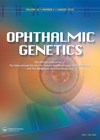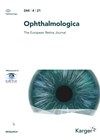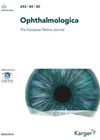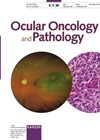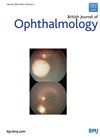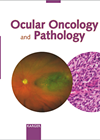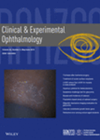Patient reported outcomes in adolescents with inherited retinal diseases
This was a two-centre validation study of two sets of patient reported outcome measures (PROMS) for adolescents (13-17- years-old) with inherited retinal diseases. The measures were the Michigan Retinal Degeneration Questionnaire (MRDQ) and the Michigan Vision-Related Anxiety Questionnaire (MVAQ). Both...
Brolucizumab in age-related macular degeneration, HAWK Study
The aim of the study was to collect additional data on efficacy and safety of brolucizumab 6mg intended for commercialization in age-related macular degeneration (AMD) (with an increase in pH and decrease in polysorbate concentration). The HAWK Study was a...
Progression of macular atrophy on long-term anti-VEGF therapy for AMD
This retrospective study evaluated the progression of macular atrophy in 53 eyes of 53 patients receiving AntiVEGF Therapy for age-related macular degeneration (nAMD), for at least six years. None of the patients had any macular atrophy (MA) at presentation. MA...
Evaluation of Optive® in ocular discomfort after anti-VEGF intravitreal injection
In this study the authors prospectively evaluated the efficacy of Optive® eye drops after in full, then abbreviation - intravitreal injection (IVT). Patients naïve to IVT were included in the study. No artificial tear treatment was prescribed after the first...
Practice patterns of uveal melanoma management with Iodine-125 brachytherapy
With the 2006 Collaborative Ocular Melanoma Study Group (COMS) study demonstrating no difference in survival outcomes for participants randomised to either iodine-125 brachytherapy or enucleation, the majority of primary uveal melanomas in the United States are now treated with brachytherapy....
Episcleral brachytherapy (EB) for retinoblastoma (RB)
This retrospective study consisted of 11 eyes treated either with Iodine (I) -125 or Ruthenium (R) -106EB with a mean apical dose of 44Gy. There were five in group B (46%), three in group C (27%) and three in group...
Management of diabetic macular oedema (DMO)
The authors present guidelines on current diagnostic and therapeutic procedures in the management of DMO. Fluorescein angiography (FA) and optical coherence tomography (OCT) are recommended before starting treatment to help diagnose and stage DMO, and can be repeated if there...
High dose (2.5mg) bevacizumab for postradiation cystoid macular oedema
The authors present a retrospective, interventional case series investigating the efficacy of high dose (2.5mg/0.1ml) intravitreal bevacizumab in the treatment of persistent postradiation (Iodine-125 plaque brachytherapy for uveal melanoma) cystoid macular oedema (CME). Persistent CME was defined as increased or...
Adjunctive topical 5-FU vs. MMC for surgically excised, localised OSSN
Ocular surface squamous neoplasia (OSSN) comprises a range of dysplasia including corneal-conjunctival intraepithelial neoplasia and invasive squamous cell carcinoma. The traditional treatment for localised non-invasive OSSN has been surgical excision with or without intraoperative cryotherapy. Postoperative adjunctive topical chemotherapy significantly...


